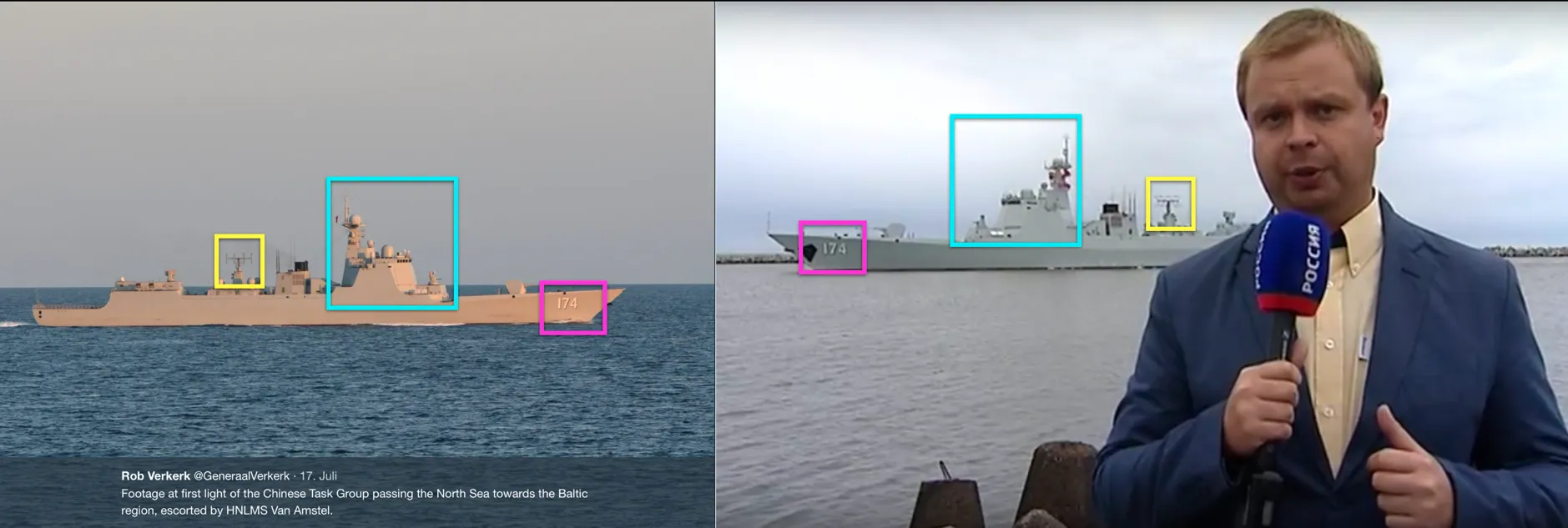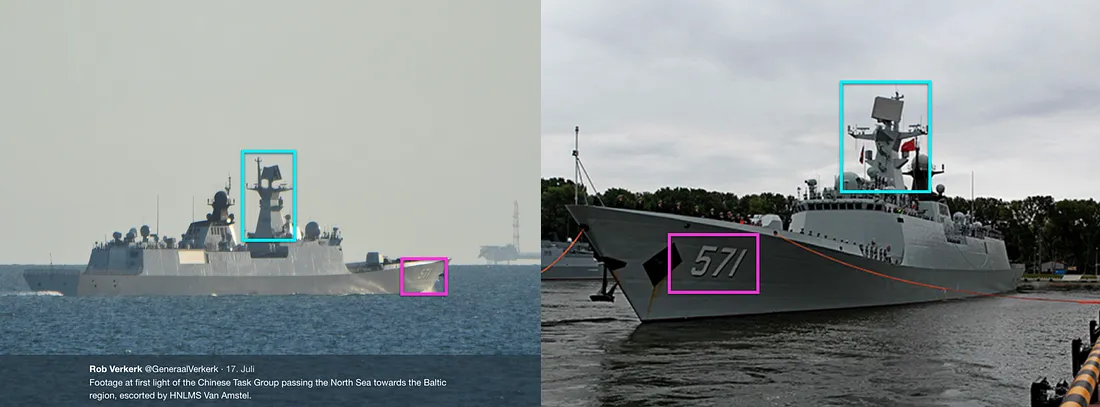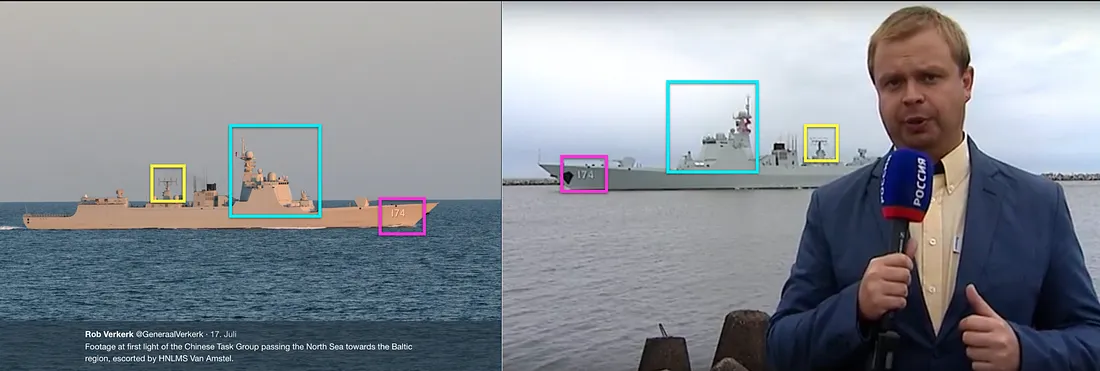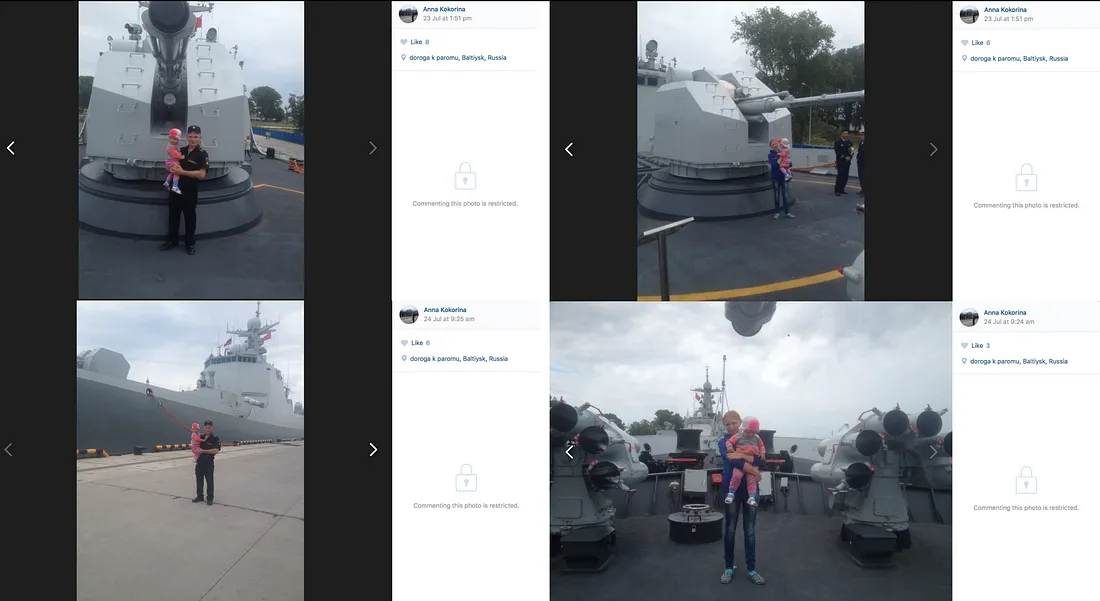North by Far East: Baltic Sea Naval Exercise
Russia and China’s joint naval exercise in the Baltic Sea sends clear signal
North by Far East: Baltic Sea Naval Exercise
Share this story

On July 21, three Chinese warships — the destroyer Hefei, the frigate Yuncheng, and the supply ship Luoma Lake — arrived at Russia’s western port of Baltiysk, Kaliningrad, on the Baltic Sea.
Chinese ships came to participate in the bilateral naval exercises known as “Maritime Cooperation-2017,” which is meant to train and organize anti-submarine, anti-aircraft, and anti-ship defense forces in the Baltic Sea. This area has been a focal point of NATO-Russia tension, in part due to NATO’s enhancing its presence in the Baltic states since the conflict in Ukraine began. The exercises themselves, as well as the public posturing involved, show that both Russia and China are keen demonstrate their presence in the Baltic Sea.
The Russian Ministry of Defense (MoD) reported the goals of the exercise:
During the active phase of the exercise from July 25 to 26, the navies of the two countries will work out the issues of joint anti-sabotage, anti-aircraft, and anti-ship defense.
In addition, the sailors will perform firing exercises for various types of surface and air targets, as well as take part in joint activities such as a training scenarios in which a man who fell overboard must be saved, dry cargo must be transferred between participating ships, and a sinking ship must be provided assistance.
Based on the rhetoric and imagery from both participating countries, the exercise proved a strong signaling exercise of intentions in the Baltic Sea.
The Chinese forces
On July 17, Commander of the Royal Netherlands Navy Admiral Rob Verkerk tweeted two images showing the Chinese warships passing through the North Sea on their way to the Baltic Sea.
Additional footage taken from NH-90 of @dhcluchtmacht. https://t.co/6qo7nsjt9J pic.twitter.com/h49icKex2Y
— René Tas (@admiraalTas) July 17, 2017
Admiral Verkerk was retweeted 256 times and covered by Western media outlets like the Swedish public media outlet SVT.
Subsequently, on July 21, the Russian MoD published photos and a video showing Chinese ships arriving at the port in Baltiysk, Kaliningrad, with the Russian Navy forces greeting them.
A comparison of the images provided by both sources confirms that one of the ships in the images is the Yuncheng frigate, listed as a Type 054A (NATO reporting name Jiangkai II) frigate, with the number 571.

A YouTube user also filmed the arrival parade. At the end of the video the user reports:
I counted 80 people with the crew, one helicopter, four pilots, 10 people with the Special Forces. The Special Forces are standing and the pilots. In total, 80 people with the crew.
The arrival was also reported by Kremlin-controlled media outlet Vesti Kaliningrad. The ship featured in the video is identified by the journalist as the Hefei destroyer. It matches the warship previously spotted by the Dutch navy. The number and name of the ship match the information of a ship included in a list of Type 052D (NATO reporting name Luyang III class or Kunming class) destroyers.

On July 23, VK user Anna Kokorina posted multiple images of a man and a woman holding a baby on a warship, with a geotag in Baltiysk.
The visual references highlighted in the images above help to identify that the ship is, indeed, the destroyer Hefei, confirming that the destroyer was in Baltiysk.

On the day when a supply ship flying a Chinese flag arrived in Baltiysk, Twitter user @koful2001 (“Kaan Kurtulus”) posted, with geotags, two images of it.
China navy 964 Type 903 replenishment ship @Saturn5_ @YorukIsik pic.twitter.com/JGZ0nGDKFk
— Kaan Kurtulus (@koful2001) July 21, 2017
Photographs posted by Admiral Verkerk confirm the identity of this ship to be the Chinese supply ship Luoma Lake. This identification is also supported by a report by the Russian news agency TASS.

The Russian forces
According to a Baltic Fleet representative’s interview with TASS, “‘Russia’s new generation Project 20380 corvettes — the Steregushchy and the Boiky — [as well as] a rescue tug, Kamov Ka-27 multi-purpose shipborne helicopters (NATO reporting name Helix), the Sukhoi Su-24 tactical bomber (NATO reporting name Fencer), and the Antonov An-26 military transport aircraft (NATO reporting name Curl) are taking part in the drills.’”
On July 21, VK user Vitaliy Pikalov, who identified himself as a Boiky crew member, posted an image of himself standing in front of the destroyer Hefei.

One of the photos posted on July 23 by the aforementioned VK user Anna Kokorina shows the man with the baby in front of a different ship, numbered 532.

This number matches the vessel number of the corvette Boiky, as it is listed among other Project 20380 corvettes.
This image was also tagged with the same Baltiysk geotag:

Both images indicate that the Russian and Chinese ships that were announced by official sources were stationed at the same port, presumably in order to participate in the joint exercise.
The exercise
According to a TASS interview with a Baltic Fleet representative, the “Maritime Cooperation-2017” exercise would be divided into two stages. The first, a coastal stage, would take place from July 21 to July 24. The second, an active sea stage, would be carried out from July 25 to July 28.
TASS and Vesti Kaliningrad reported that after the exercises in Baltiysk, the Chinese ships will go to St. Petersburg.
Deputy Commander-in-Chief of the Russian Navy Vice Admiral Alexander Fedotenkov, announced that the joint exercise will later continue in Vladivostok, Russia’s far eastern coast.
New China TV, the official YouTube channel of Xinhua News Agency, the official press agency of the People’s Republic of China, regularly reported about the exercise.
Shortly after the arrival of the Chinese ships in Kaliningrad, New China TV published footage of Russian and Chinese soldiers playing tug-of-war.
On July 25, New China TV posted three videos of the exercise on YouTube. The videos show Chinese and Russian warships leaving the port in Baltiysk, the Chinese missile frigate Yuncheng firing, and multiple ships conducting a live-fire exercise. On July 26, New China TV published footage from an exercise on contraband inspection and maritime rescue. No similar footage appeared on the Russian MoD YouTube channel or on the YouTube channel of the Russian MoD television network, Zvezda TV.
The first shot in the footage of the warships leaving the port shows the corvette Steregushchy. The visual features and the vessel number match the information of a ship found on a list of Project 20380 corvettes.

In addition to the frigate Yuncheng (No. 571), the supply ship Luoma Lake (No. 964) is visible in the video of the Yuncheng firing exercise.


In addition, the video about the live-fire exercise features the Russian corvette Steregushchy (No. 550).

Finally, the video about exercise on contraband inspection and maritime rescue shows a helicopter “rescuing” a person and landing on the frigate Yuncheng. As still images from the video illustrate (below), the supply ship Luoma Lake (No. 964) can be seen from the helicopter landing platform in the video.

Based on media published by New China TV, no evidence shows that the destroyer Hefei or the corvette Boiky participated in the exercises shown in the videos.
Who cares about the exercise?
On the day the Chinese Navy arrived in Baltiysk, Russian media sources, including Kremlin-controlled international media outlets RT and Sputnik, published video stories and featured articles about the joint naval exercise. The narrative of the stories and articles was that NATO and the West were “paranoid” about the exercises.
An RT video story published references to articles in The Telegraph, Daily Star, and Daily Express, noting that these articles use the words “war” and “massive” in their headlines. The video story continues with an explanation about the exercises and an interpretation of why the West is concerned.
Similarly, on July 26, Russian TV channel Zefer published a story titled “‘The Baltics in Storm’: The army of Russia and China are conducting joint exercises at the borders of NATO. Unexpected surprise.”
A Zefer broadcast anchor interprets the impact of the exercise:
And now about the amusing. While Russia and China are carrying out a joint exercise with no significance in its scale, the West is seriously preparing for a real war. Of course, the Western partners are stressed about the place Russia chose for the maneuvers. NATO for a long time has thought of the Baltic Sea as a home pool, but then all of a sudden a big Chinese fish appears in the waters.
At the same time, Kremlin-controlled media outlets have been clear that the exercise is a signal to the West.
The English version of the Kremlin-controlled Sputnik reported on the exercise on July 19, in a piece titled “Why Russia-China Drills in Baltic Sea a ‘Political Signal to the West.’” On July 24, Sputnik Latvia published a feature titled, “The first Russian-Chinese exercises in the Baltic: who worries.” The article explains:
Of course, the joint maneuvers of the Chinese Navy and the Russian Navy in the Baltic do not threaten anyone, but they demonstrate a considerable potential for cooperation between the two sides in the defense sphere and surely cool the hot heads of admirals and generals in Brussels and Washington. The missile theme of the exercises almost leaves no doubt that the Russian-Chinese hieroglyphs of the “Maritime Interaction-2017” are addressed to the NATO bloc and the United States, whose time of domination is expiring.
On July 24, the Chinese newspaper People’s Daily published an opinion post by political commentator Tian Dongdong accusing the West of being hypocritical. The article was titled, “Time to take a chill pill on China-Russia maneuver.” The article reads:
For one thing, freedom to navigate is a right claimed but often misused by Western powers. If Western navy ships sail into the South China Sea, as they do, and conduct disguised “freedom of navigation,” like what the United States has done for numerous times there, why should Chinese ships, who act perfectly in accordance with international norms, be strangers to European waters?
In addition to calling the West hypocritical, Tian makes three additional points: that NATO previously hosted larger scale exercises in close proximity to China, that these types of exercises have been legitimized by NATO as tools to test and validate concepts, procedures, systems, and tactics, and that Western media sources use double standards when reporting about China.
Similarly, on July 26, People’s Daily published an article titled, “Chinese warships in heart of Europe rattle the Western powers out of their security dream.” The article reads:
The joint naval drills in the Baltic Sea are rattling the nerves of the Western powers. However, the Chinese government has made it clear that the drills are not aimed at any third party, which, by definition, includes NATO. In addition, China does not have a ruthless history of colonialism.
On July 24, the Chinese media outlet China Global Television Network (CGTN) published the opinion of Zhu Chenghu, an expert from the Defense Affairs Institute at China’s National Defense University of the People’s Liberation Army. The article reads:
In Zhu’s opinion, if one looks at the practice, the area [of the regularly held Maritime Cooperation exercise] is spreading from the East China Sea to the west Pacific and the South China Sea. For the western part, it extends to the Black Sea and this year to the Baltic Sea. So this is quite natural and usual because both China and Russia will have to get themselves used to familiar [sic] with the situation there. And it promotes the development of the relations between the two sides, especially the cooperation between the two militaries. So the outsiders don’t have to overreact.
The official narrative is that “Maritime Cooperation-2017” is meant to be a regular exercise to strengthen cooperation between two militaries. On July 24, China Daily published:
The drill is a practical step in strengthening the Sino-Russia comprehensive strategic partnership of coordination, as well as bolstering exchanges and cooperation between the two militaries, especially the navies, Vice-Admiral Tian Zhong, the deputy commander-in-chief of the People’s Liberation Army Navy, said at the drill’s opening ceremony on Saturday.
The same article contains additional interpretation from an independent expert:
Li Xing, a professor of international relations at Beijing Normal University, said it is understandable for Western countries to closely follow this year’s drill because this is the first time the Chinese navy is conducting exercises at NATO’s doorstep.
The way both Russian and Chinese media sources interpret the exercises and reflect Western media reports indicate that both countries want to present the West as bothered by the exercise, therefore, the military powers of both Russia and China are internationally important.
Conclusion
Chinese warships — the destroyer Hefei, the frigate Yuncheng, and the supply ship Luoma Lake — indeed were in Baltiysk, the Russian port city in the Baltic Sea from July 21 to July 24.
The “Maritime Cooperation-2017” exercises were carried out in the Baltic Sea, but there is no evidence to suggest that either the destroyer Hefei or the corvette Boiky participated in the live-firing and maritime rescue exercises.
Based on @DFRLab’s analysis of the exercise and of local media reporting, the signal is clear that both Russia and China see the exercises as a demonstration of their potential presence in the Baltic Sea arena.

